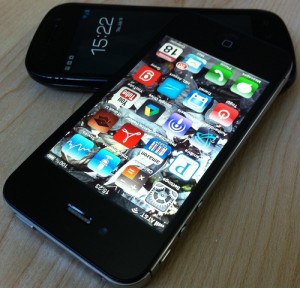 If you residing in the United States and planning to travel abroad, you have to take some extra steps to make sure that your cell phone is ready to go with you. Otherwise, you may get a shocking surprise with your next phone bill or discover that your phone simply does not work outside the US.
If you residing in the United States and planning to travel abroad, you have to take some extra steps to make sure that your cell phone is ready to go with you. Otherwise, you may get a shocking surprise with your next phone bill or discover that your phone simply does not work outside the US.
Here is what you should do before embarking on your next adventure.
As a first step, you need to check whether your cell phone is GSM or GSM-compatible. GSM (Global System for Mobile Communications) is a standard to describe protocols used by mobile phones. Europe and Asia are using GSM. In the US digital cellular networks are split between GSM and CDMA. For example, Verizon uses CDMA instead of GSM. However, some of their phones are GSM-compatible. Hence, it truly goes down to case-by-case basis, and you have to check your phone capabilities. Just remember if your phone is CDMA it will be useless abroad.
Assuming that you have a GSM phone, there are 2 alternatives to choose from: get an international plan from your cell phone service provider or unlock your phone and get a SIM card abroad.
Let me explain these options a little further.
1. International plan
You can inquire about an international plan from your service provider. Unless you are frequently traveling abroad, your service plan does not include international coverage. However, all major service providers (i.e. AT&T, Verizon, etc…) offer international plans. First, you have to decide what services you will need while traveling abroad: calling, data or messaging. Pricing varies depending on your choice, so you should consider what will be actually necessary during your trip. If you choose the international option with your US service provider you will keep your phone number, but it may become fairly expensive. Therefore, you carefully have to compare the international plan from your US provider vs. buying a local SIM card.
Alternatively, you can
2.1. Unlock your GSM phone
Great news: on July 1, 2013 EU reduced roaming charges across Europe and made data 36 percent cheaper, and promised further cuts. Read more here.
If you have a GSM phone, you have to unlock it before going abroad. Unlocking procedure varies, but, generally, you need to contact your service provider to do so. There are debates that unlocking your phone should be legal, but we are not there yet, so the safest bet is to contact your provider. If your contract expired, the provider should unlock your phone permanently. If you are still under contract, you should ask your provider to unlock your phone temporarily for the duration of your trip.
2.2. Once abroad, buy a SIM card
Generally, the SIM card is country-specific: it may not work in a different country or may incur roaming charges. Therefore, you may need to buy a separate SIM card for every country you are planning to visit. Also, you should be aware that the SIM card has a time limit: for example, if you get 100 minutes for 7 days your SIM card will stop working after 7 days even if you used less than 100 minutes. Same goes for the data part of the plan.
Any cell phone plan has 3 components: calling, SMS, and data. Different SIM card plans may offer different combinations of those: some may include more calling minutes, others more data. Before buying, you have to consider how you are going to use your phone. If you are not sure, ask the clerk at the store and s/he will help you.
It is important to note that every SIM card is associated with a unique phone number. Therefore, your phone number will be different every time you acquire a new SIM card.